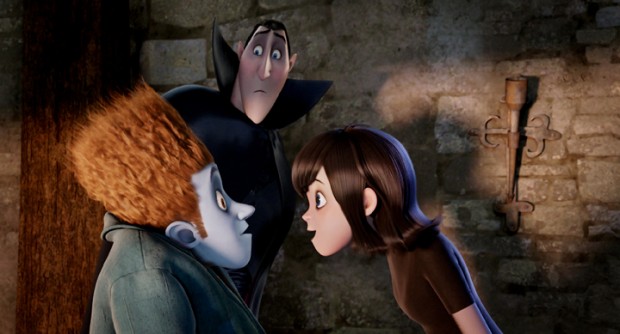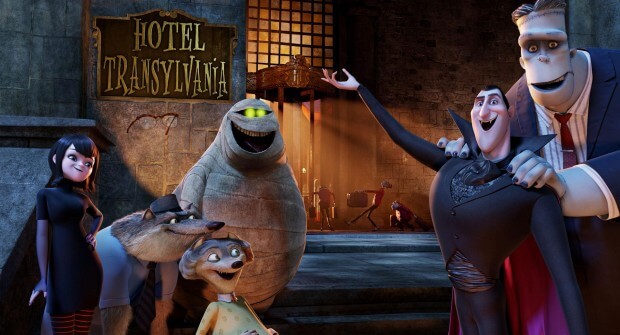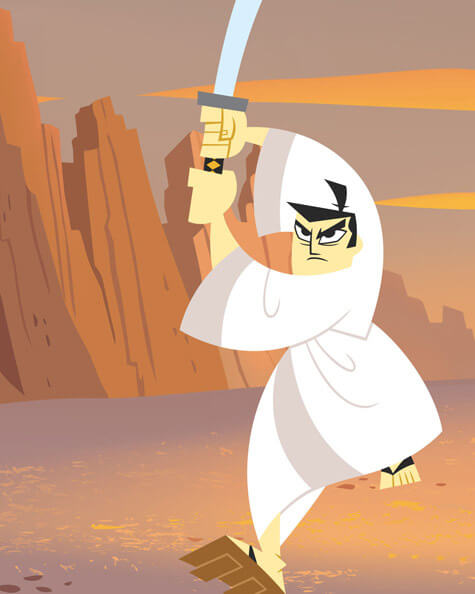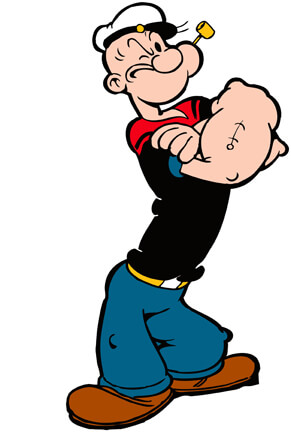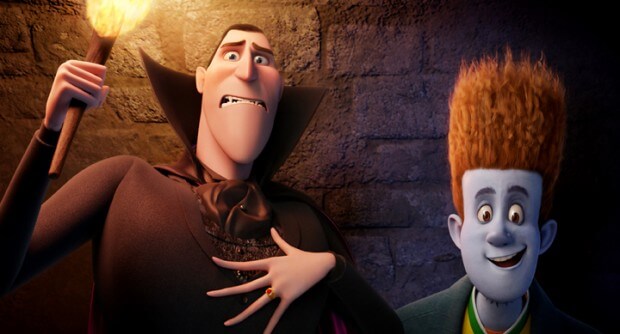Genndy Tartakovsky Interview
Hotel Transylvania aims to thrill audiences worldwide as we enter the season of trick or treats and general spooky goings on.
All of his work encompasses a very bold visual style that has become a signature for the director. Perhaps with a casual glance at the promotional posters and images you may find detecting such a thing difficult, but having seen the film we can assure you that the film oozes with the bold action linked to Genndy Tartakovsky’s name and should not disappoint fans of his work.
You are well respected for your work in TV so did you find the transition to film difficult?
One of the biggest transitional elements that affected me was the pressure. There is always a pressure with television that’s more about handling the speed and the quality in a very small time frame, when you feel like you have barely finished drawing and 6 months later the show is on the air! But if the episode does not turn out so well you know you can move on to the next one and hopefully the audience will like it better, so you don’t have that pressure to be so amazing and great for every one of the 52 half hours.
With the features you have a year and a half and one shot to be funny, entertaining, beautiful, engaging and build characters that can sustain a movie, all those things and you have one opening weekend! Once the movie comes out and it does not connect with the audiences you’re done. Having that framework in mind I had to make a real switch. Everything in features gets scrutinised a lot more and I tried to balance the right amount of scrutiny so we did not over analyse it, because everything I have done in my life is by my gut I don’t feel like film making has rules. There are basic rules you can follow but generally it is about having a story telling gut, and I really trusted my gut through my career and through this role your gut, your confidence and your experience is all you have.
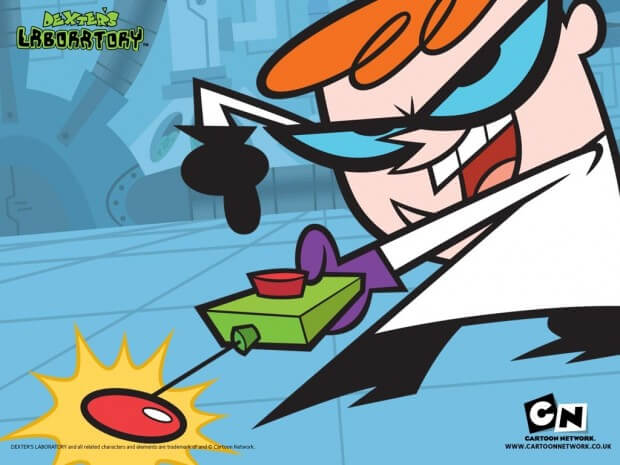
Which method do you prefer?
I love TV because I have been very fortunate with TV that I have been able to do my own creations. The great thing about television is you can try something new with every episode and that is what I love, we can push ourselves, especially on Samurai Jack. On features you get the reaction, on TV we would do something and then it would be on TV and that’s it; no feedback, there is nothing like sitting in a movie theatre with an audience watching something you have created, it feels like stand up comedy without actually having to do it! I can sit down comfortably and hide in my chair! And that is an amazing feeling to watch one of the test screenings and being able to tell when people were loving it and when it was slowed down too much.
This film had long history before you became involved what did you bring to the it?
The basic idea of the story was already there ‘Dracula is a Dad who runs a hotel for monsters’ so when I came in I gave it a framework and structure. I gave it the tone and the broadness of the comedy; the exaggerated animation. Some of the castle was already built and some of the characters were built so we built a lot of the secondary ones and Dracula and Jonathan. I was still able to contribute a lot but it definitely would have been nice to be there from the start. The reason I did step in was because I loved the artwork and it did look beautiful so I had a good set of toys to play with from the start.
The film wastes no time in showcasing your frantic style of animation. How did you retain control over the animation style?
That was my job! I would sit there with the animation crew everyday and re-draw some of the poses and push the animators. Feature animation is really based on tradition, the style of animation hasn’t really changed since Disney started; it is all very grounded, so to do something more exaggerated and not what people expect I really had to push them and try to show them that you could be really crazy and cartoony and broad but still retain the emotional element. The whole concept of animation, the reason I love it so much is funny movement; caricatured movement. At first the studio seemed very weary, but to me the movie seems very tame and controlled for my own sensibility so the first time I started showing them the movie they thought it was so broad, I told them ‘yeah, it’s a big comedy and this is what’s going to give it the energy and the signature’. When I first started on the movie I was scared that the CGI would take away all the style and all my sensibilities and soften them, because it’s a computer it has a different way of doing things then by hand. The organic look disappears and homogenises everything so all the movies are starting to look very similar and so I was afraid of losing my point of view and that is all you have as a director.
Do you prefer 2D or CG? Does it really matter so long as you are conveying your own graphic style?
I can’t sit here and say I love CG more than 2D. I am very happy with the way things on the film turned out as far as the look of it, especially with everything that went on during this production – its kind of a miracle it looks the way it does! It is difficult; there are a lot of voices in feature animation and sometimes it is hard to retain the point of view. But yeah, ideally I would be making a hand drawn film I think. It’s funny because when I first showed the end credits (the end credits are 2D animated in Tartakovsky’s style) I wasn’t sure how people would react to them on the big screen because there is such a difference watching 2D animation on TV versus watching it four stories high. It took me back to my childhood when I would go to a movie theatre myself aged 14 and sit and watch ‘The Jungle Book’ on the big screen. It had so much craftsmanship and it’s the magic of animation that I fell in love with and I wanted it to have the same feel. So for me no amount of detail or realism can compete with something that is hand drawn because it’s the ultimate personal expression.
You have recently been signed on to develop your own projects with Sony. Will you still be working on the Popeye film your name is attached to, and will your new films feature some of your old characters such as Samurai Jack?
Starting out I am developing the Popeye animated film and I am also involved in my own original idea so we will see which one feels ready first and then after that who knows? Doing all this press I am very surprised at how many people have affection for Samurai Jack. I feel it is more popular now than when it was on the air – somehow it has survived all these years and gotten stronger. The heads of the studios have been to the conventions and junkets and stuff, they can see this outpouring of love for Samurai Jack and people’s requests to have a Samurai Jack feature and they have started taking notice. They are interested, which is amazing, so we will see! Hopefully Hotel Transylvania will succeed and we will see what happens.
Is he your favourite of your past creations?
Artistically yes. We reached a new level for television I thought, but creatively I think creating the character of Dexter (Dexter’s Lab) and having him survive this long, I am so proud. There are so many characters created every year and you get 15-20 new shows and within two years they are gone so to have something that has lasted since 1995 there is nothing more I could be proud of.
Tell us more about your approach to Popeye. Is the character one of your inspirations?
Popeye was one of the cartoons I watched as a kid along with Tex Avery shorts and Tom and Jerry. All those things started to influence the things that I like, so the only reason I agreed to do Popeye was after I said that if I am going to do this it would have to be an animated physical comedy. 80% of that would be the humour rather than the other way around, which would be mainly using dialogue jokes. I want it to be all about the physical elements almost like Mr Bean – he is a modern day cartoon! So they (the studio) wanted that too and that is what inspires me; to push animation where it hasn’t been for a very long time, to do something different. I would love each film to be different from the next.
Hotel Transylvania features a lot of vocal comedy. How did you find balance between your own artistic voice and the voices of some well know comedians?
It was hard and easy at the same time. Luckily I like all these people, I think they are very funny, so part of my job was to take their joke and deliver it. When you have someone like Andy Samberg delivering a line, there is so much in his expression that is so unique and so funny, so it was a case of saying ‘here is the joke, how do I not mess it up’ and that’s the big part of being the director.; you’re communicating. Not only are you telling the story, you are also telling the joke and you need to pick the right shot or pick the right pose, do the right timing and make sure you don’t ruin it! My biggest fear is ruining something that already worked from a really good line delivery. They are all so funny and very serious about their comedy. During the recording sessions they did a bit of fooling around but most of the time they are super-serious about telling jokes and if a joke isn’t landing or they are not saying a line right there are very affected by it. There is nothing worse for a comedian than not having a joke land and taking comedy so serious opened my eyes to the way they worked.
Similar to yourself perhaps, trying to hit the right notes visually?
Absolutely. For me every single detail; the poses, timing, colour, the way it reads, it all builds to the story or the joke or the action. If the pose is not right it just loses it. I had a load of great animators who picked up the animation style straight away and others just needed a little push at the beginning. There is one scene near the pool where Jonathan is just walking down some stairs; in the first pass it was very good but there was no energy to it, so I worked with the animator and changed the timing and made it less realistic and once we changed it making it more cartoony and caricatured all of a sudden it got a laugh, so we wondered if we had done the same with every scene – had we milked every scene for all it can be? That is when we started to get some really great scenes and sequences. You may not be laughing for every single scene but you are enjoying the energy of it.
Hotel Transylvania is in cinemas now



